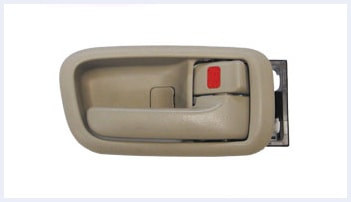Let’s face it, automated quality assurance systems such as machine vision are are not very sexy. In fact, they often fall into the same no-nonsense category as risk management, IT security, and maintenance — a necessary expense, of course, but an expense nonetheless and a drag on the bottom line.
Manufacturers of plastic injection-molded parts for the automotive and related industries have a

problem/challenge that has bedeviled them since the very beginning of their industry: short shots. Short shots happen when liquid plastic is injected into a mold but fails to fill the mold for a any of a variety of reasons. As a result, the final part is malformed when ejected from the mold. While human QA personnel can catch some of these defective pieces, it is nearly impossible to catch 100% of them, which means they’re shipped to the automotive final assembly plant along with the non-defective parts. Only when they’re retrieved and inspected by the assembly line worker will the defect become apparent.
This is a big problem, because under virtually all automotive contracts, a vehicle manufacturer can reject an entire shipment and impose monetary penalties on the plastic injection molding company based on a single short shot. That’s right: one short shot! Now that such “zero tolerance” contracts have become the industry-standard, providing 100% quality assurance has morphed from a competitive advantage to an absolute necessity. And today it looks like machine vision — that boring old automated quality assurance system — is the answer to the short-short issue and a savior to the plastic injection molding world.
Under the latest scenarios, robots unload plastic-injection molded parts from their presses, then presents them one at a time to the camera of a machine vision system. This is a vast improvement over other machine vision systems which commonly could only see one side of the completed part, many of which harbored defects on the unobserved other sides.
Using geometric pattern location algorithms, the machine vision camera confirms that the edges of a part conforms to the specifications. If the part passes, the machine vision system tells the robot to place the part on the conveyor with all the other good parts. If the part fail, the machine vision system tells the robot to put the part on the conveyor leading to all the other scrap parts.
As a bonus, these advanced machine vision systems can also verify that the mold is empty, i.e. there isn’t a piece of the defective part still inside. This is a huge advantage, because un-emptied molds can lead to massive downtime if not caught immediately and cleaned out.
All in all, machine vision systems now have a direct revenue-enhancing impact on the bottom line. And that is very sexy indeed!